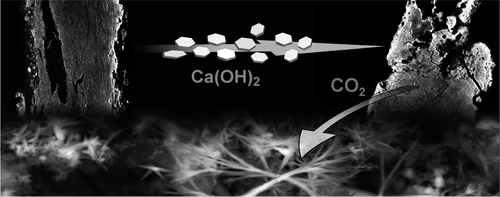Seashells inspire new way to preserve bones for archeologists, paleontologists

Recreating the story of humanity's past by studying ancient bones can hit a snag when they deteriorate, but scientists are now reporting an advance inspired by seashells that can better preserve valuable remains. Their findings, which appear in the ACS journal Langmuir, could have wide-ranging implications for both archeology and paleontology.
Luigi Dei and colleagues explain that a process similar to osteoporosis causes bones discovered at historically significant sites to become brittle and fragile—and in the process, lose clues to the culture they were once part of. Preserving them has proved challenging. Current techniques to harden and strengthen bones use vinyl and acrylic polymers. They act as a sort of glue, filling in cracks and holding fragments together, but they are not ideal. In an effort to stanch the loss of information due to damage, Dei's team set out to find a better way to preserve old bones.
The researchers turned to seashells for inspiration. Using skeletal fragments from the Late Middle Ages, they grew aragonite, a kind of lime that some sea animals produce to shore up their shells, on the bones in a controlled way. The treatment hardened the surfaces of the bones, as well as the pores inside them, making the ancient remains 50 to 70 percent sturdier. "These results could have immediate impact for preserving archeological and paleontological bone remains," the scientists conclude.
More information: "Aragonite Crystals Grown on Bones by Reaction of CO2 with Nanostructured Ca(OH)2 in the Presence of Collagen. Implications in Archaeology and Paleontology" Langmuir, 2014, 30 (2), pp 660–668. DOI: 10.1021/la404085v
Abstract
The loss of mechanical properties affecting archeological or paleontological bones is often caused by demineralization processes that are similar to those driving the mechanisms leading to osteoporosis. One simple way to harden and to strengthen demineralized bone remains could be the in situ growth of CaCO3 crystals in the aragonite polymorph – metastable at atmospheric pressure −which is known to have very strong mechanical strength in comparison with the stable calcite. In the present study the controlled growth of aragonite crystals was achieved by reaction between atmospheric CO2 and calcium hydroxide nanoparticles in the presence of collagen within the deteriorated bones. In a few days the carbonation of Ca(OH)2 particles led to a mixture of calcite and aragonite, increasing the strength of the mineral network of the bone. Scanning electron microscopy coupled with energy dispersive X-ray spectroscopy (SEM–EDS) and Fourier transform infrared (FT-IR) spectrometry showed that aragonite crystallization was achieved. The effect of the aragonite crystal formation on the mechanical properties of the deteriorated bones was investigated by means of X-rays microtomography, helium porosimetry, atomic force microscopy (AFM), and Vickers microhardness techniques. All these data enabled to conclude that the strength of the bones increased of a factor of 50–70% with respect to the untreated bone. These results could have immediate impact for preserving archeological and paleontological bone remains.
Journal information: Langmuir
Provided by American Chemical Society



















